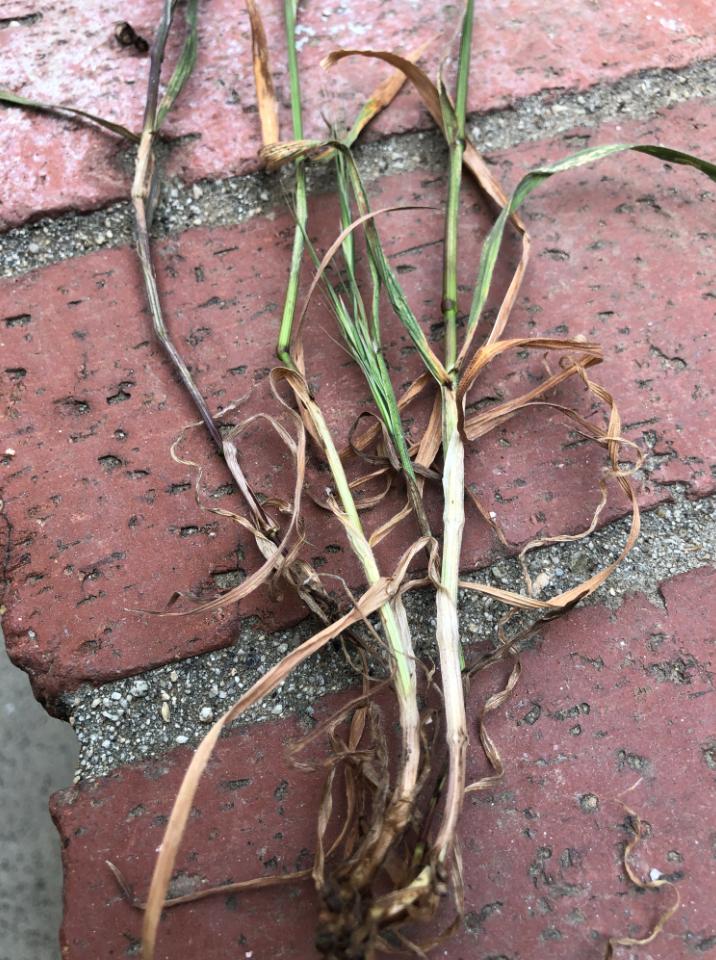- What type of grass or weed is this?
- What stage in the plant is this in? Is it near germination?
- How do you kill it?
1 Answer
Bromus species, B. diandrus. Rip gut brome.
Bromus diandrus Bromus diandrus_ripgut Synonyms: B. rigidus, B. rigidus var gussonei, B. gussonei
Common names: ripgut brome; great brome; ripgut grass
Bromus diandrus (ripgut brome) is an annual grass (family Poaceae) found throughout California and other western states. Ripgut brome is one of several European annual grasses that have displaced much of the native grass throughout California. Ripgut brome becomes very dry and flammable during the dry season, increasing wildfire frequency. Increased wildfire frequency leads to conversion of shrubland and woodland to grassland. Ripgut brome is reported to hybridize with two other invasive grasses: downy brome (Bromus tectorum) and red brome (Bromus madritensis). Brome seeds may spread great distances via water and soil movement and by clinging to animals and people.
Brome grass can be controlled by using herbicide mixtures such as imazapic + imazapyr (for example, OnDuty®), imazapic + imazamox (for example, Intervix® ) or imazapic + imazapyr + MCPA (for example, Midas®) in Clearfield® (IT) wheat cultivars or metribuzin in Eagle Rock wheat. Brome grass can also be controlled using triazine herbicides in TT canola cultivars, glyphosate in Roundup Ready® canola, or OnDuty® herbicides in Clearfield® (IT) canola.
-
As it is annual, collecting the seed will prevent more growing next year. There will still be seed in the ground of course. The green seed shown may be advanced enough that after drying it will be viable. So too late for simply mowing and leaving on the ground. Commented Apr 14, 2023 at 0:40



